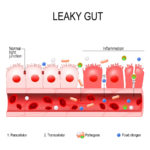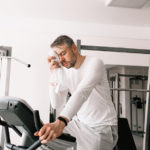By Bonnie Jenkins, Advanced Natural Wellness
If you’ve been shopping lately, no doubt you’ve seen all of the products sporting pink ribbons due to breast cancer awareness. Designed to raise money for breast cancer research, the pink ribbon campaign was a good idea – at first. Now, though, it seems like every other product is covered with ribbons.
While I think that breast cancer awareness is a good thing, the sheer number of products sold in the name of research has undermined their message. All of the ribbons just fade into the landscape of stuff we ignore.
That said, breast cancer is still an important issue for women – and for those who love them. Why? Because 240,000 American women will be diagnosed with breast cancer this year alone, and half of them will be over the age of 60. More than 40,000 women will die because of the disease.
Fortunately, the incidence of breast cancer seems to have stabilized after the discovery that hormone replacement therapy boosted the risk among postmenopausal women. But it’s still a threat. So the more you know about this potentially deadly disease, the more likely it is that you’ll take steps to lower your risk.
Staying Abreast with Breast Cancer Awareness
When it comes to breast cancer, some factors are out of your hands. To start, simply being a woman and getting older increases risk. Then there’s family, though genes account for only about 5 to 10 percent of all breast cancers. Your risk is somewhat higher if your mother or sister develops the disease, particularly if onset is prior to menopause. That means the remaining 90 percent of breast cancers are caused by something else.
Estrogen, the hormone responsible for a woman’s sexual development, also contributes to breast cancer. The problem isn’t estrogen itself, but rather the total amount you’re exposed to over the course of your lifetime. Girls who begin their periods before age 12 and women who experience late menopause run an increased risk of breast cancer. That’s because the start of menstruation turns on estrogen production, and menopause switches it off. The longer a woman menstruates, the greater her lifetime exposure to estrogen.
MD Exposes the Hidden Danger to Your Eyes

When your eyesight starts to fail, it's a real problem. Suddenly you can't go to the grocery store... you can't get to the doctor if you have an emergency... you can't meet your friends for dinner…
Your "regular" doctor doesn't have time to keep up with the latest research. And the same goes for eye doctors. They go to school to learn how to fit you for glasses and contacts, but have no way of preventing the damage and loss of eyesight that threatens your freedom and independence.
Let me show you something that explains a LOT about how your eyes work.
In my FREE Special Report, I'll show you a HUGE, untapped resource for your eyes that safely and naturally restores clear, effortless eyesight.
Click here to get started...
Not all estrogens are the same, however. Current research has pinpointed certain estrogen metabolites, know as 16-hydroxyestrones and 4-hydroxyestrones, as cancer promoters, whereas other metabolites actually protect against the disease.
Breast cancer risk is also higher for women who give birth after age 30 or who don’t have children. The reason? Pregnancy and breast-feeding both slow estrogen production. Breast-feeding for at least six months can cut a woman’s risk to half what it would be had she never nursed a child.
Hormones you’re unwittingly exposed to may do similar damage. Chemicals like DDT and PCBs are endocrine disruptors – chemicals that act like hormones. These persistent industrial pollutants linger indefinitely in waterways and eventually show up in the fatty tissues of fish, animals and – since we are on top of the food chain – people. Once in the body, these hormone-mimicking chemicals can stimulate rapid breast cell replication.
Live Your Breast Life
While many of these risk factors are completely out of your control, there are some you can actually do something about. Take alcohol consumption, for example. If you drink every day, you’re increasing your risk. Alcohol interferes with normal liver metabolism, allowing estrogen to linger in the bloodstream. The more you drink, the higher your risk.
Being overweight can also boost your risk, especially after menopause – and especially if you wear your weight around the middle. According to the Iowa Women’s Health Study of 41,000 women, those with large waist circumferences who also had a family history of breast cancer ran the highest risk. But it isn’t just about your belly. Dropping a few pounds also moderates your hormone levels. Most women’s bodies continue to produce estrogen after menopause – not in the ovaries, but in fat cells. On average, overweight women have nearly double the estrogen levels of thin women.
A good place to start reducing your risk is with a low-calorie, high-fiber diet. Why high fiber? Because it lowers serum estrogen. Whole grains, fruits and vegetables also lower cancer risk because of their high antioxidant content. And include plenty of crucifers like broccoli, brussels sprouts, cabbage and cauliflower. What makes crucifers special is indole-3-carbinol, a chemical that affects estrogen levels. It influences the liver metabolism of estrogen in such a way that estrogen circulating in the bloodstream is less potent.
And don’t forget to exercise! In addition to helping shed hormone-promoting pounds, exercise lowers estrogen production at its source – the pituitary gland. The effect can be so strong that some professional female athletes go months between periods. Because it increases immunity, regular exercise may also enhance the body’s ability to deflect cancers. But don’t think you need to go overboard. Consistently walking for half an hour four times a week can make a significant dent in your estrogen levels.
The Big D
The World's Quickest Solution for Ending Prostate and Urinary Misery
This has recently been revealed to be one of the only real breakthroughs in prostate health.
The seeds of a strange fruit (sometimes called "Chinese Apples") hold powerful phytonutrients that are a revolution in prostate health.
In fact, UCLA and Veterans Administration research have now proved this to be true.
Not only that, but it may be the worlds quickest solution for ending prostate misery.
Simply stated, these phytonutrients represent a huge step beyond beta sitosterol, saw palmetto, and other phytosterols alone.
Simply click HERE if you want to have fast prostate relief...restful, uninterrupted sleep...no more constant "urges to go"...enhanced virility...and optimal prostate support for life.
If you could take just one supplement to ward off breast cancer, vitamin D would be it. According to research from the United Kingdom, the sunshine vitamin may lower a woman’s risk of getting breast cancer or of developing a more aggressive form of the disease.
In another study presented at a recent meeting of the American Society of Clinical Oncology, scientists from the University of Toronto measured vitamin D blood levels in 512 women in their 50s who had been newly diagnosed with breast cancer. These women were then tracked for 12 years to measure their progress.
At the start of the study, only 24 percent of the women had adequate vitamin D blood levels, while nearly 38 percent were deficient. By the end of the study, the vitamin D-deficient women had nearly double the risk of their disease progressing and a 73 percent greater risk of death compared with the women who had adequate levels.
These days, because of the sharp rise in sunscreen use, many of us don’t get the amount of vitmain D we need from the sun. But you don’t need to expose your skin to the sun’s harmful rays. Instead, take 1,000 to 1,500 IU of supplemental vitamin D daily for optimal cancer protection.
One Last Thing …
What about soy? Should you or shouldn’t you add it to your diet? If you are in perimenopause, the isoflavones in soy can reduce breast cancer risk, build bones and help treat menopausal symptoms.
Isoflavones, such as genistein, are considered phytoestrogens because they are a plant-derived chemical that exhibits mild estrogen-like effects. But, unlike estrogen-mimicking chemicals, these phytoestrogens guard against cancer by blocking harmful types of estrogen.
A new study of more than 700 Korean women adds to the evidence that soy foods protect against the risk of developing breast cancer. Among the pre-menopausal women studied whose soy intake was among the top 20 percent of participants, there was a 61 percent lower risk of breast cancer compared with those in the lowest 20 percent. For postmenopausal women, the risk experienced by those eating the most soy was 78 percent lower.
So, bottom line: Feel free to enjoy soy. And with the ever expanding number of soy foods on the market, it’s easier than ever! Try some soy milk or cheese. Or have a soy burger or hot dog. You can also substitute soy crumbles for hamburger in recipes. Your family may not even know the difference!
This Just In …
It’s no secret that cholesterol-lowering statin drugs come with a host of side effects – not the least of which is rhabdomyolysis, a condition that causes muscle deterioration that can lead to kidney failure. And these side effects are much more common than we’ve been lead to believe.
Now, researchers from the University of Alabama at Birmingham have discovered just how statins undermine our muscles. It turns out that statins interfere with the formation of specific muscle cells known as satellite cells. These satellite cells play a key role in repairing your muscles after exercise or injury. So the higher the statin dose, the fewer satellite cells are created – which means that injured muscles don’t heal or repair themselves as readily.
So if your doctor suggests taking a statin drug, ask him about natural ways to lower your cholesterol levels, including red yeast rice, fish oil and garlic. Your muscles just might thank you for it!
References:
American Physiological Society Conference in Hilton Head, South Carolina, September 24-27, 2008.
Dal Maso L, Zucchetto A, Talamini R, et al. “Effect of obesity and other lifestyle factors on mortality in women with breast cancer.” International Journal of Cancer. 2008;123:2188-2194.
Goodman P J, Ennis M, Pritchard KI, et al. “Vitamin D (Vit D) deficiency is common at breast cancer (BC) diagnosis and is associated with a significantly higher risk of distant recurrence and death in a prospective cohort study of T1-3, N0-1, M0 BC.” Journal of Clinical Oncology. 2008; 26: abstract 511.
Kim MK, Kim JH, Nam SJ, et al. “Dietary Intake of Soy Protein and Tofu in Association With Breast Cancer Risk Based on a Case-Control Study.” Nutrition and Cancer. 2008;60:568-576.
Vogel VG. “Epidemiology, genetics, and risk evaluation of postmenopausal women at risk of breast cancer.” Menopause. 2008;15:782-789






